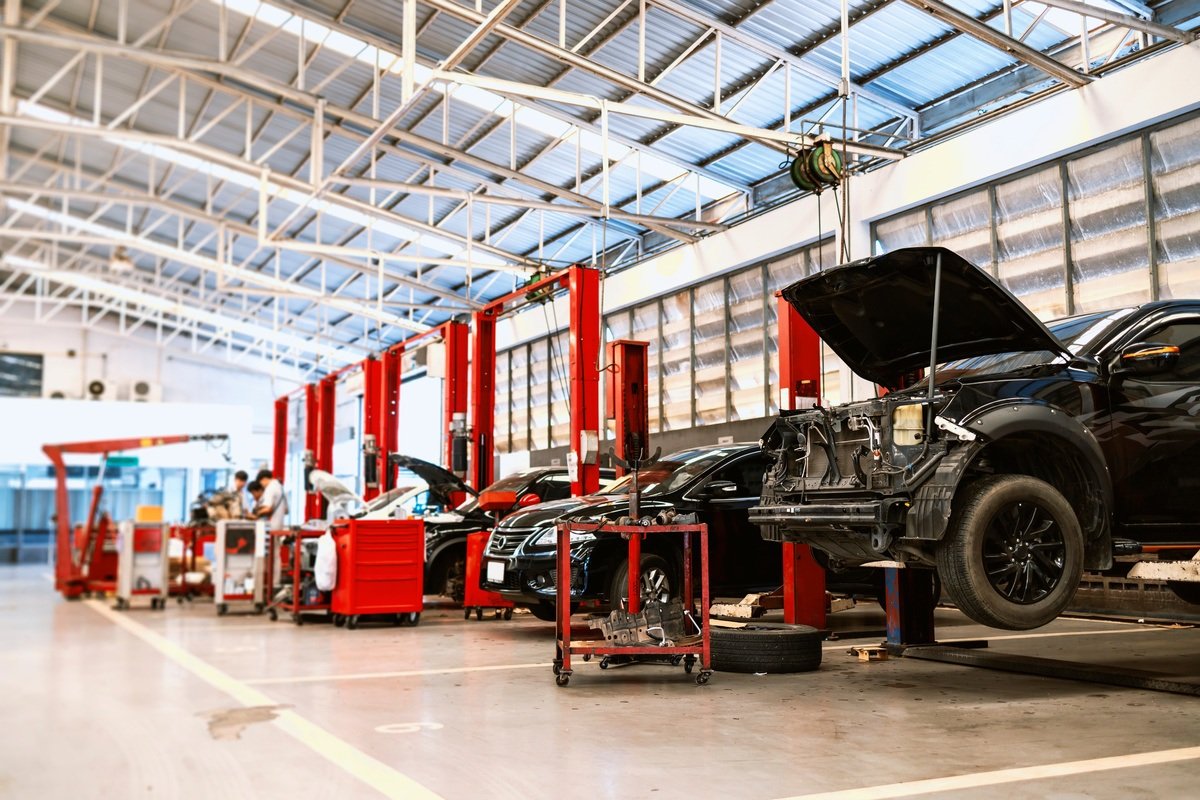O Gauge Majestic Flower Mill O Gauge is a popular scale used in model railroading, where the ratio of the model to the real-world object is 1:48. This scale is larger than many other common model scales, such as HO (1:87) and N (1:160), making it easier to see intricate details. The O Gauge models are a favorite among hobbyists because they offer more space for creating realistic scenes and incorporating features like moving parts, lighting, and detailed landscapes.
The O Gauge scale’s popularity can be traced back to its development in the early 20th century when Lionel Corporation first introduced it. Over time, it became synonymous with high-quality model trains and detailed scenery. Today, collectors and enthusiasts cherish O Gauge for its ability to combine detailed engineering with artistic expression. The size of O Gauge models also allows for elaborate features, including realistic moving mechanisms like trains and even windmills.
The Fascinating World of Model Mills
Flower mills are a fascinating aspect of model railroading. Historically, these mills were central to agricultural economies, processing grains into flour and helping to power entire communities. As technology advanced, these mills became industrial giants that shaped communities and towns. For model enthusiasts, capturing the essence of these massive, intricate structures in miniatures provides a connection to a bygone era of industry.
Flower mills in model form are not just about replicating a building but about telling the story of human ingenuity. The moving parts, such as the grinding mechanisms and flowing water, make these models a dynamic addition to any train layout. The appeal of the O Gauge Majestic Flower Mill lies in its historical significance, detailed craftsmanship, and its ability to enhance the narrative of any model railroad setup.
Introducing the O Gauge Majestic Flower Mill
The O Gauge Majestic Flower Mill stands out as an iconic model in the world of model railroading. Combining the charm of historical mill design with the precision of O Gauge scale, it brings an entire industrial era to life on your tabletop. The Majestic Flower Mill model is revered not just for its accuracy in design, but for its intricate details, such as working gears, rotating windmills, and flowing water features, that capture the essence of a real-life milling operation.
The beauty of the Majestic Flower Mill goes beyond just looking realistic. It integrates seamlessly into model railroads, offering enthusiasts a chance to bring the narrative of historical industrialization to their scenes. With elements that mimic the mechanics of a real flower mill, it offers more than just aesthetic value—it tells a story of craftsmanship, industry, and innovation.
The History of Flower Mills
Origins of Flower Mills
Flower mills have a rich history that dates back to ancient civilizations. Early versions were often simple, hand-powered devices used to grind grain into flour for baking. These early mills were crucial to sustaining communities as they transformed harvested crops into staple foods. In ancient Egypt and Greece, wind-powered mills were already in use, harnessing natural energy to make the grinding process more efficient.
As the Industrial Revolution began in the 18th century, flower mills underwent a massive transformation. The introduction of steam engines allowed mills to process grains at a much faster rate. This helped fuel the growth of industrial cities across Europe and North America. These large-scale mills not only provided food but became the backbone of local economies, transforming agriculture and trade.
The Evolution of Flower Mills
As technology advanced, flower mills evolved from simple structures into grand, complex industrial machines. In the late 19th and early 20th centuries, mills were built with massive stone and iron structures, capable of processing vast amounts of grain. These mills became symbols of industrial progress, representing the power of human engineering and the modernization of agriculture.
The design of these mills was often both functional and artistic, with tall brick or stone buildings, large gears, and intricate waterwheels. As transportation networks grew, flour from these mills was shipped to markets far and wide, allowing entire economies to flourish. By the time the O Gauge Majestic Flower Mill was designed, it was a homage to this golden era of milling history, replicating the grandeur and complexity of these structures in miniature form.
The Golden Era of Milling
The golden era of milling spanned several decades, from the late 19th century through the early 20th century. During this period, flower mills became important landmarks in towns and cities. Their tall smokestacks and massive waterwheels made them a centerpiece of the landscape. The mills employed hundreds of workers and often became the lifeblood of their surrounding communities.
Architecturally, these mills were often large, imposing structures made of stone or brick, with high, arched windows and complex roofing designs. The O Gauge Majestic Flower Mill reflects these features, carefully crafted to mirror the grandiosity of real-world mills. For collectors and model railroad enthusiasts, this golden era is one of the key themes explored through models like the O Gauge Majestic Flower Mill, offering a glimpse into the past while enhancing the aesthetic appeal of their displays.
Understanding O Gauge in Model Railroading
What is O Gauge Scale?
O Gauge refers to a model scale where the ratio between the model and the original object is 1:48. This is one of the largest scales used in model railroading, allowing for high levels of detail and realism. Trains and accessories built to this scale offer more intricate design possibilities, such as working engines, lighting, and realistic moving parts.
This scale gained its popularity thanks to Lionel, one of the pioneers of the model train industry, which introduced O Gauge in the early 1900s. Its larger size made it a favorite among hobbyists who wanted to create complex, realistic layouts that could hold intricate pieces like the Majestic Flower Mill. The ability to include larger accessories, such as buildings, bridges, and mills, made it an attractive option for modelers looking to tell a detailed story.
O Gauge Popularity
The O Gauge scale remains incredibly popular with hobbyists today, maintaining a devoted following. Many collectors are drawn to the realism it offers and the fact that the models are often easy to customize. Additionally, the scale allows for more dynamic layouts with features like movable parts, lights, and intricate scenery, providing endless opportunities for creative expression.
Enthusiasts often use O Gauge models not just for display, but for operating large layouts that resemble actual train routes and industrial setups. The Majestic Flower Mill, with its moving parts and intricate detailing, is a perfect example of how O Gauge can bring history to life in a model setting. Its large size makes it easy to appreciate the small details, such as the water wheel, gear mechanisms, and detailed architecture.
O Gauge Accessories and Detailing
Accessories play a critical role in enhancing O Gauge models. These can include everything from small figures, such as workers and passengers, to elaborate scenery items like trees, mountains, and rivers. When integrated with a model like the Majestic Flower Mill, accessories can help set the scene and tell a story, whether it’s about the history of milling or the surrounding landscape.
The Mill can be enhanced with additional features like working lights, animated parts, and weathering effects. These elements bring the model to life, adding a level of authenticity that captures the imagination. For instance, adding realistic water effects to the mill’s waterwheel or placing tiny figures of workers operating the mill can help transport the viewer back in time, immersing them in the industrial era.
The Majestic Flower Mill in Detail
Design and Structure
The O Gauge Majestic Flower Mill is a marvel of design, capturing the essence of historic milling structures in a compact and highly detailed model. The mill’s design features towering walls made of brick or stone, with large arched windows that let light pour in, illuminating the working gears and mechanisms inside. The roof is sloped to mimic the design of real mills, with intricate detailing that adds to its authenticity.
The waterwheel is a key feature of the model, with moving parts that make it appear as if it’s really turning, powered by flowing water. This motion adds a dynamic quality to the scene, drawing attention and creating a sense of realism. The materials used in the model are carefully chosen for their durability and ability to withstand the test of time, ensuring that the Majestic Flower Mill remains a prized piece in any collection for years to come.
Functionality and Mechanism
The O Gauge Majestic Flower Mill is not just a static display—it’s a working model. The gears, wheels, and mechanical elements inside the mill function as they would in a real-world flower mill. The rotating waterwheel is powered by a small motor, making it spin as if it were grinding flour in real time. This movement enhances the realism of the model and provides an interactive experience for viewers.
The model also includes finely detailed interior features such as millstones and conveyors, all crafted with precision. These elements reflect the complex workings of an actual flower mill, allowing hobbyists to appreciate the engineering involved in these historical structures. The Majestic Flower Mill provides a tactile, immersive experience for anyone interested in model railroading or historical milling.
Customization Options
One of the standout features of the Majestic Flower Mill is the ability to customize it to fit any model railroad layout. Enthusiasts can add their own touches to the mill, such as repainting the exterior to match a specific historical style or adding personal landscaping elements around the mill. Weathering techniques can be used to give the model an aged, lived-in look, making it appear as though it has been standing for decades.
Customization is key to making the Majestic Flower Mill a unique piece in any collection. Some hobbyists might add tiny figures of mill workers or farmers to create a lively scene, while others may choose to integrate it into a larger diorama with rail tracks, rivers, and surrounding countryside. The options for customization are endless, making the Majestic Flower Mill a versatile addition to any O Gauge collection.
The Role of the Majestic Flower Mill in Dioramas
Creating Realistic Scenes
The Majestic Flower Mill serves as an excellent focal point for model railroad dioramas. Whether placed at the center of a bustling town or nestled in the middle of a sprawling countryside, the mill’s intricate design and moving parts add life to the scene. By positioning the mill near water features or railroad tracks, enthusiasts can create realistic scenes that reflect the historical role of flower mills in industrial areas.
Surrounding the mill with additional elements such as trees, buildings, and roads helps to build a complete environment, further enhancing the story being told. The Majestic Flower Mill is versatile enough to fit into various settings, whether depicting a rural farming community or an industrial town.
Enhancing the Storyline
The Majestic Flower Mill can play a central role in the storyline of a model railroad layout. For example, it could be the heart of a town’s economy, with trains delivering grain to the mill for processing. Alternatively, it could be a more passive element in a larger scene, adding historical context to the layout. The mill’s moving parts, such as the waterwheel, provide a dynamic storytelling element, with the movement symbolizing the constant flow of work in the mill.
By combining the mill with other features, such as trains, workers, and surrounding buildings, hobbyists can craft compelling narratives that transport viewers back to the early days of industrialization. The Majestic Flower Mill isn’t just a building; it’s a tool for telling a deeper, more engaging story.
Why the Majestic Flower Mill Appeals to Enthusiasts
Aesthetic Appeal
The O Gauge Majestic Flower Mill appeals to hobbyists because of its stunning aesthetic. The model’s architectural details, such as its stonework and arched windows, make it a visual centerpiece in any display. The waterwheel adds movement and life, drawing attention and giving the model a dynamic quality. Whether displayed on its own or as part of a larger diorama, the Majestic Flower Mill adds beauty and depth to any model railroad setup.
Beyond just the structure itself, the mill’s placement in a layout can also enhance the overall scene. Whether it’s surrounded by a lush countryside or nestled beside a bustling railroad track, the model fits seamlessly into many different landscapes, adding authenticity and charm to the display.
Historical Connection
Another reason why the Majestic Flower Mill resonates with collectors is its historical connection. Flower mills were integral to the development of communities and economies throughout history. By building or displaying this model, hobbyists are able to connect with a past era, gaining a deeper appreciation for the role of milling in industrial societies.
The Majestic Flower Mill, with its intricate design and functional moving parts, serves as a tribute to the ingenuity and craftsmanship of the industrial revolution. For collectors and hobbyists, it’s more than just a model—it’s a window into history, allowing them to explore the role of these iconic mills in shaping the modern world.
Engineering Marvel
The Majestic Flower Mill is also an engineering marvel. It incorporates moving parts, such as gears and waterwheels, that simulate real-world functions. This level of engineering adds a layer of excitement and engagement for hobbyists. The precision required to design and construct such a model showcases the skills involved in both model railroading and historical replication.
The integration of mechanical movement in a model adds realism and allows for interactive experiences. Whether the mill’s gears are turning or the waterwheel is rotating, these elements create a dynamic display that appeals to those who appreciate the technical aspects of model building.
Collecting and Preserving the Majestic Flower Mill
Tips for Aspiring Collectors
For collectors, acquiring a Majestic Flower Mill is an exciting milestone. To ensure that you are getting an authentic model, it’s important to purchase from reputable dealers who specialize in O Gauge products. Checking the condition of the model, especially for any signs of wear or damage, is essential. Look for models that come with original packaging or certificates of authenticity, as these can help preserve the model’s value.
Collectors should also be aware of the rarity of certain editions. Limited-edition models or special releases of the Majestic Flower Mill might carry higher value, especially if they have unique features or modifications. Doing research and keeping track of the model’s history will help collectors make informed decisions.
Preservation and Maintenance
Maintaining and preserving the O Gauge Majestic Flower Mill is crucial to ensuring its longevity. Regular cleaning is necessary to prevent dust and debris from accumulating in the mechanical parts, which could affect its function. A soft cloth and mild cleaning solution can be used to wipe down the model, while more intricate components might require more delicate care.
For long-term preservation, it’s important to store the mill properly when not in use. Keeping it in a dry, cool place away from direct sunlight will prevent discoloration and deterioration of the materials. Using a display case or protective covering can also shield the model from potential damage.
Building Your Own O Gauge Majestic Flower Mill
Step-by-Step Guide to Assembly
Building your own O Gauge Majestic Flower Mill from a kit is a rewarding project for enthusiasts. The first step is gathering all the necessary materials and tools, which typically include small screws, glue, paint, and various detailing elements. A detailed instruction manual will guide you through the assembly process, step by step.
Begin by constructing the base and walls of the mill. Ensure that each piece fits securely before moving on to the next section. Pay special attention to the waterwheel mechanism, as it’s often the most intricate part of the build. Once assembled, you can begin the painting and detailing process, giving the mill its finished, realistic look.
DIY Customizations
Once the basic structure is complete, it’s time to add your own customizations. Whether it’s painting the exterior to match a specific period or adding extra features like lighting, landscaping, or figures, these details will make your flower mill unique. Weathering techniques can add an aged effect, making the mill look as though it has been operating for decades.
Customizing the mill allows you to express your creativity and enhance the realism of your model railroad. Adding tiny touches, like figures of workers or farm animals, can further enrich the narrative of the diorama, creating a more immersive experience for those who admire your work.
The Impact of O Gauge Models on the Hobbyist Community
Encouraging Creativity and Craftsmanship
Model railroading, especially in O Gauge, is an art form that encourages creativity and craftsmanship. Building and customizing models like the Majestic Flower Mill allow enthusiasts to express themselves through design and engineering. Each model tells a story, and the process of creating a detailed layout requires problem-solving, creativity, and attention to detail.
Enthusiasts often collaborate and share their ideas with others in the community, fostering a sense of camaraderie and mutual appreciation. Whether through online forums, clubs, or conventions, the model railroad community is a vibrant space where people can showcase their craftsmanship and inspire one another.
Educational Value
O Gauge models like the Majestic Flower Mill are also highly educational. They offer hobbyists the chance to learn about historical technologies, industrial engineering, and the evolution of agriculture. By building and studying these models, enthusiasts can gain a deeper understanding of the past, all while honing their skills in model construction and design.
Read More: Townville pa Car Cruise in for 2024 july 12










